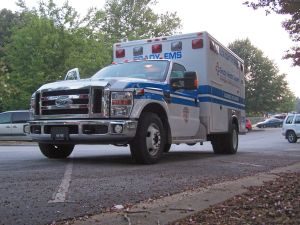 Field medicine is rapidly evolving today more than ever. Changes in the aging population, evidence-based medicine, healthcare reimbursement, and preventive care are just some of the factors that affect the population served by the Emergency Medical Services (EMS) provider. Proactive EMS systems are rising above these challenges adapting to innovative means, not only to survive, but also to flourish in the fast-changing environment.
Field medicine is rapidly evolving today more than ever. Changes in the aging population, evidence-based medicine, healthcare reimbursement, and preventive care are just some of the factors that affect the population served by the Emergency Medical Services (EMS) provider. Proactive EMS systems are rising above these challenges adapting to innovative means, not only to survive, but also to flourish in the fast-changing environment.
Allowing EMS providers to train in terms of reduction of the high-frequency caller, follow up of discharge, and efforts for harm reduction are more efficient means than the customary EMS model, which is not only high cost but also highly reactionary. Although traditional methods are praiseworthy, they still lack sustainability. The system must not only depend on a well-trained team, but also to a well-educated EMS professional to offer sophisticated and complex medical services.
The majority of the EMS organizations have a list of things that they would like to accomplish. This includes improving safety and hiring practices updates. However, there is a big difference between writing down the to-do list and accomplishing all the things listed there. Here are some of the things that EMS providers should do.
1. Capitalize in Safety
Ambulances and vehicles responding to emergency services travel over 4 million miles every year. Because of this, it is important that companies implement extensive safety initiatives to educate its team, minimize the number of miles driven with sirens and lights, and use technology to enhance safety. There are also innovative solutions that some EMS providers integrate into their operations.
These technologies are utilized to communicate and accumulate the operating data of the vehicles as well as their location information through a system called informatics or telematics. Several other companies install vehicle tracking systems and fleet management systems on all of its vehicles and ambulances. This technology comes with road safety monitors and a geo tab system that tracks driving and offers automatic feedback to the driver about its speed, deceleration, acceleration, and other metrics.
2. Develop Intensive Clinical Improvements
Some companies integrate care goals. It is a clinical area where the company feels its system needs more improvement. To be able to do this, EMS providers must first determine their baseline performance. After that, they develop a system-wide education program through Medic-CE. As soon as the education program starts, outcomes are regularly measured and feedback is given to clinicians.
The development and planning of every care goal begin months earlier than the official launch. This is done by researching the latest happening inside the profession and other measures from groups like the Joint Commission. After that, leader, physicians, and members brainstorm.
3. Embrace Changes
It is important to embrace the latest operational, clinical, and business practices. Being an early change adopter means that the company must, at times, take risks and accept that not all practices can match their expectations. This approach is similar to that of successful corporations and is a welcome approach in the business because one must consistently test the new approach and products to enhance performance. The willingness to try out new things has, most of the time, brought a positive impact on the performance of the company and the response of the patients.
4. Pledge To Learning
It is important for an EMS provider to back its clinicians through clinical services department that handles QI and education programs. Professionals must also attend various conferences that they can participate even while they are at the station or at home using only their laptop and webcam. This method is similar to what hospitals do and further improves the EMS profession by providing a similar review for various cases, including pre-hospital cases.
It is also helpful if the organization provides continuing education program through Medic-CE to its clinical staff. This could include PALS, CPR, and ACLS to name a few. The company can also provide the professionals with a more focused education for vehicle mechanism particularly focused on emergency vehicle operations. Newly hired employees are also trained and mentored by officers. These trainers should have comprehensive training in new talent development. This includes having finished the National EMS Management Association’s Field Training and Evaluation Program.
EMS or emergency medical services is provided by devoted professionals, both volunteer and career, who manage crucial care to patients in need. This service is a part of a range of care that involves the dispatcher of the 911 emergency call center, fire, EMS team arriving on scene, and healthcare providers at the emergency or trauma department. How effectively and efficiently this care is administered can spell the difference between life and death.
Shift Frequency © 2019 – Top Things Every EMS Should Be Doing
